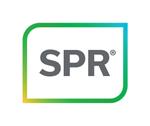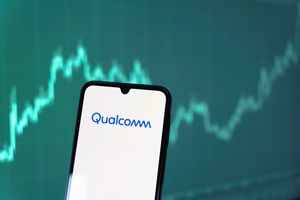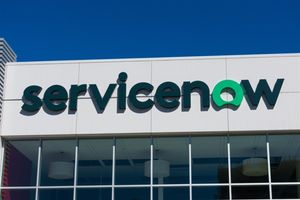- Data on chronic postoperative knee pain to be highlighted as a top abstract along with a first-ever look at SPRINT PNS in patients with migraine pain -
CLEVELAND, July 17, 2025 (GLOBE NEWSWIRE) -- Leading pain medicine physicians will continue to expand their understanding of the broad applications for the SPRINT PNS System at the American Society of Pain & Neuroscience (ASPN) Annual Conference in Miami. Presentations will highlight the treatment of chronic postoperative pain, head pain and migraines, low back pain, and radicular back pain with percutaneous 60-day peripheral nerve stimulation (PNS).
Top Abstract Selection: “Percutaneous 60-Day Peripheral Nerve Stimulation Relieves Chronic Postoperative Pain and Pain Interference After Total Knee Arthroplasty 12 Months After Treatment” (Goree et al.) Total knee arthroplasty is a common surgical procedure for patients with chronic knee pain caused by conditions such as osteoarthritis, prior injury, or age-related joint deterioration. While most patients experience improved mobility and reduced pain, approximately 10 to 20 percent continue to report persistent pain that interferes with function and daily activities after surgery. This analysis, to be featured as an oral presentation, followed study1 participants in the PNS group up to 12 months after treatment. The majority of participants in the PNS group reported substantial (≥50 percent) pain relief and relief of pain interference with daily activities at the end of treatment, and the majority of participants also sustained these substantial improvements 12 months after treatment. There were no study-related serious or unanticipated adverse events (AEs). Skin irritation was the most common AE.
“Effective Treatment of Occipital Head Pain in the Presence of Migraine Using Percutaneous 60-Day Peripheral Nerve Stimulation: Results from a Prospective, Single-Arm, Multicenter Study” (Pingree et al.) Chronic occipital head pain can result in disability and decreased function and can be exacerbated by migraine symptoms. The study is the first to evaluate the effectiveness of 60-day PNS in the treatment of occipital head pain due to cervicogenic headache (CGH) or occipital neuralgia (ON) in patients with concurrent migraine. Three months after beginning treatment, 82 percent (9/11) of participants reported substantial reductions (≥50 percent) in average pain and/or pain interference. Additionally, participants reported an average of 2.2 more headache-free days per week at three months compared to baseline, which represents a decrease in headache burden among those with CGH or ON. The most common AEs were skin irritation or itching. Two infections were reported at lead exit sites (one classified as serious), and both resolved after a course of antibiotics.
“60-Day PNS vs. Standard Interventional Management for Chronic Low Back Pain: RESET RCT Six-Month Results” (McCormick et al.) Chronic low back pain is a substantial problem that impacts millions of patients in terms of their sleep, work, and day-to-day life. The RESET™ randomized controlled trial (RCT)2 included 222 participants and evaluated 60-day PNS versus standard interventional management for the treatment of chronic low back pain. This study successfully met its primary endpoint, with a significantly greater proportion of patients treated with 60-day PNS (55 percent, 112/222) achieving ≥50 percent pain relief three months after treatment compared to baseline versus those treated with standard interventions (26 percent, 110/222). Benefits were sustained at six months post treatment, with 57 percent of the 60-day PNS group experiencing ≥50 percent improvement in average pain and/or pain interference versus 40 percent in the standard interventional management group. All of study-related AEs were non-serious and the most common PNS-related AE was skin irritation or itching at the bandage.
“Percutaneous 60-Day Peripheral Nerve Stimulation Provides Durable Relief from Occipital Head Pain: 12-Month Outcomes from a Prospective, Single-Arm Study” (Gilmore et al.) Occipital head pain is estimated to affect over 15-20 percent of patients with chronic headaches. This prospective, multicenter case series enrolled patients with CGH or ON and evaluated the effectiveness of 60-day PNS used in the treatment of occipital head pain. Twelve months after beginning treatment, 81 percent (13/16) of participants had substantial reductions (≥50 percent) in average pain and/or pain interference. This sustained level of improvement was accompanied by a majority of participants (n=16) reporting improvements in quality-of-life metrics (Patient Global Impression of Change [PGIC] ≥1) along with clinically meaningful reductions in neck disability (≥5-point reduction in Neck Disability Index, NDI) and headache impact (≥5-point reduction in Headache Impact Test, HIT-6). All of the study-related AEs were non-serious and included skin irritation, itching, and post-procedural pain.
“Retrospective Review of Percutaneous 60-Day PNS Targeting the Lumbar Spinal Nerve Root in Individuals with Radicular Back Pain” (Landman et al.) Lumbar radiculopathy occurs when the nerve root is compressed or irritated. This may occur for a variety of reasons, including herniated discs, degenerative disc disease, or spinal stenosis, and is associated with pain radiating down the leg along with numbness, tingling, and weakness. This analysis explored anonymized patient records from a real-world database to evaluate pain and PGIC in physical function with 60-day PNS targeting the lumbar spinal nerves in patients with radicular low back pain. At the end of treatment, 70 percent of patients (76/108) were defined as responders (≥50 percent pain relief and/or ≥1 improvement in PGIC in physical function), with a mean pain reduction of 66 percent. Safety was not directly analyzed in this retrospective study. This review suggests 60-day PNS targeting the lumbar spinal nerve is a promising treatment option for radicular back pain.
See all five abstracts shared at ASPN by clicking here.
1 The vast majority of funding for this clinical trial was from The Office of the Assistant Secretary of Defense for Health Affairs, through the Peer Reviewed Orthopedic Research Program under Award No. W81XWH1810799. Opinions, interpretations, conclusions and recommendations are those of the author and are not necessarily endorsed by the Department of Defense.
2 The vast majority of funding for this clinical trial was from The Office of the Assistant Secretary of Defense for Health Affairs through the Peer Reviewed Medical Research Program under Award No. W81XWH-18-1-0800. Opinions, interpretations, conclusions and recommendations are those of the author and are not necessarily endorsed by the Department of Defense.
Drs. Pingree and Gilmore are consultants for SPR.
About the SPRINT PNS System
The SPR® SPRINT® PNS System marks an innovative shift in the treatment of pain. Our breakthrough, 60-day treatment is a First-Line PNS™ option uniquely proposed to recondition the central nervous system to provide significant and sustained relief from chronic pain — without a permanent implant, nerve destruction or the risk of addiction. The system has been studied extensively for low back pain, knee pain, shoulder pain, post-amputation pain, and chronic and acute postoperative pain, is cleared for use up to 60 days, and is recognized by leading pain management centers. Market research indicates that this breakthrough neuromodulation treatment is a patient-preferred alternative to more invasive options.
The SPRINT PNS System is indicated for up to 60 days for: Symptomatic relief of chronic, intractable pain, post-surgical and post-traumatic acute pain; symptomatic relief of post-traumatic pain; symptomatic relief of postoperative pain. The SPRINT PNS System is not intended to be placed in the region innervated by the cranial and facial nerves.
Physicians should use their best judgment when deciding when to use the SPRINT PNS System. For more information see the SPRINT PNS System IFU. Most common adverse events are skin irritation and erythema. Results may vary. Rx only.
For additional information regarding safety and efficacy, visit: SPR Safety Information.
About SPR
SPR is a privately held medical device company, providing patients with a non-opioid, minimally invasive pain treatment option. Our SPRINT® PNS System fulfills a critical unmet need for a drug-free, surgery-free option for millions who suffer from chronic pain. Backed by the largest body of clinical evidence in peripheral nerve stimulation for the treatment of pain, SPR has demonstrated commercial demand in untapped peripheral (shoulder and knee) and back pain markets and built an incredibly strong foundation for commercial growth. Headquartered in Cleveland, OH with satellite offices in Chapel Hill, NC and Minneapolis, MN, SPR’s Senior Management team includes experienced industry veterans with nearly 200 years of collective pain market and MedTech expertise, all driven by our purpose – to improve the quality of patients’ lives by providing them with a minimally invasive, drug-free, surgery-free solution to manage their acute and chronic pain. SPR – Solutions for pain. Inspired by life.™
SPR Contacts:
Dave Folkens
Public Relations
Dave.Folkens@SPRPainRelief.com
612.978.6547









